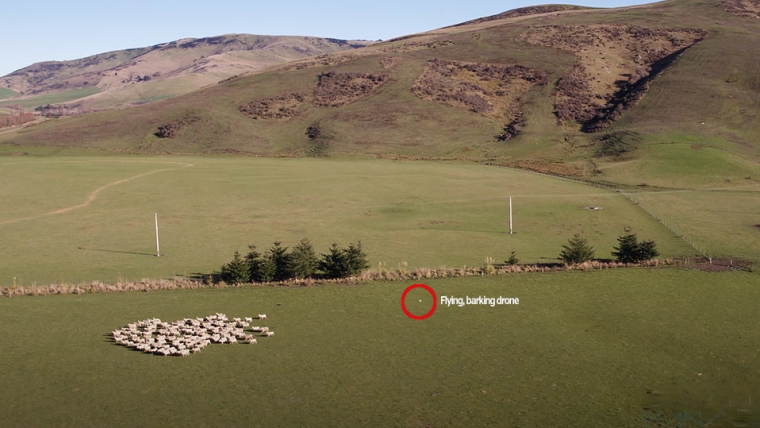
By Angus Kebbell
Drone usage is a developing market in New Zealand and while not widely used yet, the potential is there. As technology advances, drone applications will improve, better cameras, larger payloads and greater range will only increase the services and efficiencies farmers need.
Warrwick Funnell from Agdrone says, convincing farmers initially that drones “were tools and not toys” has been one of the hurdles.
Farm drones that are used for various agricultural applications are Unmanned Aerial Vehicles, or UAV’s, are highly technical and cost 10’s of thousands of dollars and require licencing and certification from the Civil Aviation Authority for their commercial usage.
Currently, most drones for agricultural use are medium-sized usually for analysis applications, while larger drones are used when there is a need to carry a load for planting or spraying applications. Like most industries currently using drones, multi-rotor configurations are the favourite in agriculture, likely due to their lower cost and high level of simplicity and ease to operate.
Funnell’s service is mostly focused on weed control or spot spraying in both pasture and pockets of woody weeds like gorse, broom and blackberry on difficult terrain.
The versatility of drones provides many different avenues for improving existing agricultural processes including soil and field analysis. Drones are able to produce 3D maps quickly and cheaply, which are then used for the design of seed-planting patterns and the generation of a wide range of data types with many applications; for example, nitrogen-level management.
Drones have the ability to monitor crops accurately, frequently and affordably, delivering high quality data that is updated regularly to provide insight into crop development and highlight inefficient or ineffective practices.
Drones can also be used to generate multispectral images of crops which are then analysed to track changes in health and maturity. The ability to assess the health of a crop quickly and precisely can be invaluable for farmers. If for instance a bacterial or fungal infection is identified, early detection allows for quick action to be taken in order to remedy the issue.
The are substantial benefits for the sheep and beef farmer, and we already are seeing some farmers use drones to check livestock, water troughs, fences, feed covers and use audio with a dog bark to muster stock.
So as technology advances, drones have the potential to change the way farmers operate and improve efficiencies and outcomes - and of course the low carbon footprint of drones can only further support the good work being done by farmers to reduce emissions.
Listen to the podcast above for the full story.
Angus Kebbell is the Producer at Tailwind Media. You can contact him here.
5 Comments
I'm looking at the photo of the barking drone, and I'm thinking a dog might be a better choice. Interesting that the drone barks instead of honking a horn. Other applications may be more suitable.
You can set it up to make any sound you like, Mine can fart on command which is bloody hilarious! I mustered my hill block from the breakfast table for tailing the other day. Shot up and shut the gate and job done with no swearing. Overall makes life easy.
I've seen one farm where the drone gives the cows a treat so they follow it. Instead of herding the cows like a dog, the drone leads them like the pied piper. It looked faster an more efficient in multiple ways.
I think the big application will be pest control in the hills . If they can set and maintain self resetting traps like the goodnature ones in remote areas, reducing the use of 1080 , and providing data on kills etc .
Predator Free Taranaki have radio linked trap network(s) so they know which traps need to be reset. But yes, I could see a quick win for using a drone to fly a network of goodnature traps that are bluetooth enabled to go and harvest data on where the kills are and which traps need renewing.





We welcome your comments below. If you are not already registered, please register to comment.
Remember we welcome robust, respectful and insightful debate. We don't welcome abusive or defamatory comments and will de-register those repeatedly making such comments. Our current comment policy is here.